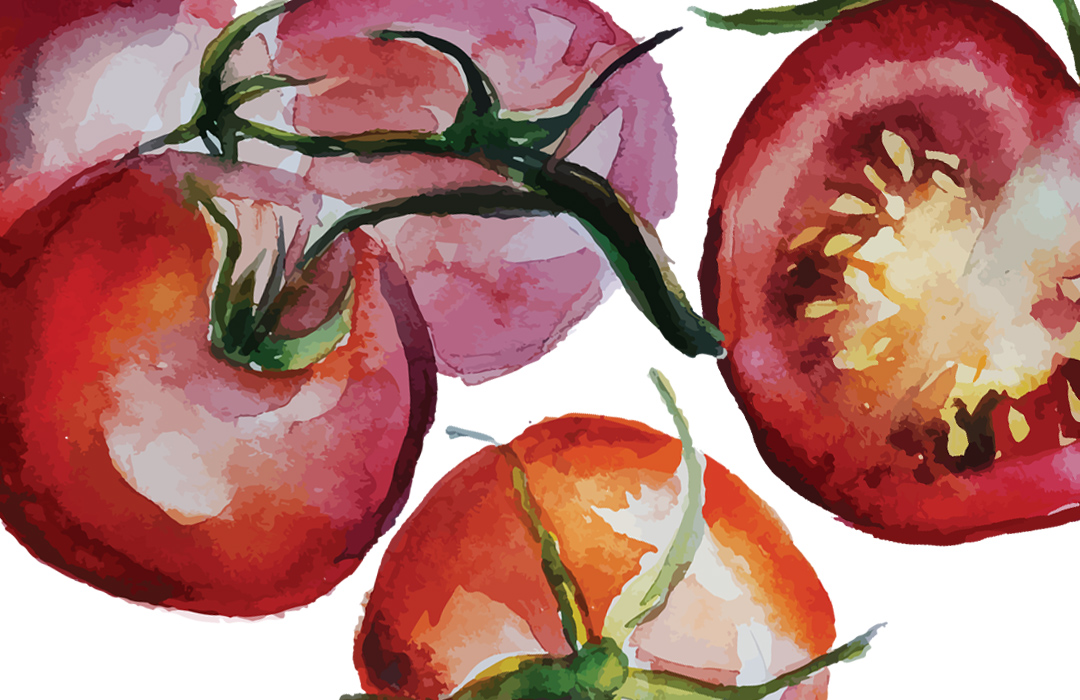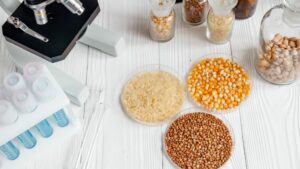Designed in response to an invasive virus, the National Seed Health Accreditation Pilot Program could prevent the need for additional regulation.
Moving tomato seed into the United States isn’t easy. Due to a number of disease and pest issues in many foreign countries, there are dozens of phytosanitary and other requirements a company must meet to move tomato seed across the border.
“It’s very convoluted and complicated,” says Ric Dunkle, senior director of seed health and trade for the American Seed Trade Association. “It’s a back breaker because you have to do so much to make sure diseases aren’t present in the seed.”
For tomatoes, the requirements are especially strict — it’s not a punishment per se, but a more stringent form of regulation to keep invasive pests and diseases at bay. However, a new pilot program that is being launched could allow seed companies to self-regulate for one disease in one type of seeds.
The National Seed Health Accreditation Pilot Program is a partnership among the seed industry, the U.S. Department of Agriculture’s Animal and Plant Health Inspection Service (APHIS) and ASTA. The pilot project came about in response to the Cucumber Green Mottle Mosaic Virus (CGMMV), which was found for the first time in California fields in 2013.
The yearlong pilot program officially launched at the end of July.
“We’re looking at a pilot program, an idea, instead of going through with new rules and regulations to handle something like this,” says Michael Perry, a USDA-APHIS senior export specialist. “We’re looking at existing industry mechanisms to manage this, and we are looking at the quality management systems out there and making sure they are up to par and accrediting those systems.”
Virus Introduction
In Asia, the Middle East and Europe, CGMMV has long been known to infect certain cucurbit species, including watermelon, melon, cucumber, pumpkin, squash and gourds. It has more recently been found in Canada, but not in the United States until 2013.
The virus, which is seed transmissible, can cause serious yield losses. According to ASTA, the virus shows up as a mottling and mosaic in leaves, as well as fruit mottling and distortion.
“Early symptoms include vein clearing and crumpling on young leaves while mature leaves become bleached and chlorotic … mild to severe leaf distortion can occur, with leaf mottling and blistering, and plant stunting,” ASTA reports.
CGMMV was found through a routine field inspection in Yolo County, Calif. The field was quarantined, and Dunkle says the virus is essentially contained, if not eliminated. But its presence set off a need to examine how APHIS, industry and other partners would need to respond.
Traditionally, USDA would go about setting up new rules or regulations for importing seed that could be affected by CGMMV. That could be anything, including required field inspections, new phytosanitary requirements or mandatory laboratory testing of all imports.
Those new rules or regulations not only take a long time to implement, but they can be costly in terms of time and money for all parties involved.
“This was a disease we had never been concerned about until this happened,” Perry says. “We would basically place a great amount of scrutiny and effort to keep that pest out.”
Another issue is that government inspections at ports of entry tend to be visual. “The problem is, you can’t visually detect pathogens that occur inside the seed,” Dunkle says.
Instead of going down that road, APHIS called together a conference of seed companies, regulatory entities and ASTA to look for alternatives. The result is the National Seed Health Accreditation Pilot Program.
“APHIS sent out this olive branch to companies when they said ‘we would like to work with industry to address the issue associated with seed imports without imposing more regulations on the industry,’” Dunkle says. “We said ‘let’s look at accrediting companies and look at what things need to be in their systems for Cucumber Green Mottle Mosaic Virus.’”
“APHIS sent out this olive branch to companies when they said ‘we would like to work with industry to address the issue associated with seed imports without imposing more regulations on the industry.”
— Ric Dunkle
Checks and Balances
To begin, APHIS will accredit as many as 20 seed companies who will work together to examine each other’s quality assurance practices and develop a standard for excluding CGMMV from U.S. soil. APHIS will perform laboratory testing on seed imports as a check on the system.
“APHIS will hopefully be able to rate the effectiveness of the program through these baseline checks,” Dunkle says. “Most of these practices are already in place for phytosanitary protection. Companies are already doing field inspections and other tests for internal company purposes.”
Seed samples will be tested at Iowa State University and compared to results from accredited companies. If successful, the testing done at Iowa State University won’t find CGMMV in seed deemed clean by industry partners.
“Instead of having the material stopped at the port of entry, a sample taken and slowing everything down, we’re using existing mechanisms to manage this,” Perry says. “It’s very low-impact as far as running the program.”
The accreditation program appeals to industry for a number of reasons. First, participants in the program will be testing seed to ensure it is free from disease and pests. Doing those tests in-house makes the process fairly streamlined.
As Perry says, mandatory testing through APHIS could slow down import and distribution processes for companies, some of which are running on schedules where a few days can be significant.
“For us, this is something we already do,” says Samantha Thomas, global stewardship and industry affairs lead at Monsanto, based in Woodland, Calif. “Our turnaround time is seven days. If this goes to an external lab, that timeline is not fixed. A couple of days could matter for a growing season.”
Second, one of the groups with the most to lose should CGMMV take hold in the United States is the seed companies themselves. Even if a particular company is not responsible for importing tainted seeds, it is just as likely to suffer the consequences of an invasive pathogen in production fields.
“None of us works in a silo,” Thomas says. “It’s in our industry’s best interest to share this information.
“None of us works in a silo. It’s in our industry’s best interest to share this information.”
— Samantha Thomas
“Seed health is not a new concept for the vegetable seed industry. Many of the larger companies have a robust system in place.”
We have good management practices, Thomas says, noting there is quite a bit of knowledge within the industry.
Tom Moore, HM.CLAUSE manager of seed production, based in Davis, Calif., echoes that sentiment and says that industry has a responsibility to not only itself, but also to consumers, to keep contaminated seeds out of the market.
“When you’re talking about diseases, they don’t attack just one company,” Moore says. “We want to be sure that the seed we bring in is as clean as possible. It’s putting more of the onus on the company — our industry — than on APHIS.”
Perry says it’s clear that seed companies have an interest in keeping their own seed as clean as possible.
“If there was a positive finding, the industry does not want that seed,” Perry says. “Everybody’s interest is in seed health. Industry has a great stake in that.”
Putting heads together on best practices also stands to improve just about everyone involved.
“You find little tidbits that are maybe not as strong as they could be when you go through a quality assurance audit,” Moore says. “Through the auditing process, we might pick up areas where we’re weak.”
Third, it’s simply expensive to comply with new regulations.
“If companies are spending all their money on the regulatory side, they don’t have as much to put into innovation,” Dunkle says. “If we can keep this in the marketplace side — if we can keep this in the corporate side — innovation will meet the challenges.”
Finally, an accreditation program can be used as a marketing tool that brings other companies into better compliance in terms of seed health. Knowing that seed is clean, or at least is certified as having been handled by a company that uses the best management practices available, could be a significant factor for a seed buyer.
“Someone could see that this part of the USDA pilot program — here are the results that are part of that program — and it could bring an assurance or a peace of mind,” Perry explains.
Dunkle says seed companies are motivated to see their competitors fall into line with better management practices.
“There’s a lot of self-policing that’s going on in the industry,” he says. “Companies who are doing the right things see companies who aren’t as causing risk to them.”
Going Forward
Dunkle says the yearlong pilot will teach all parties involved a lot about how well the accreditation system works.
He is also working with a USDA researcher to measure to what degree phytosanitary risks are lowered when using the management practices adopted by the accredited companies. Dunkle says that this will provide scientific evidence of the effectiveness of the industry’s ability to monitor itself in these cases.
After the initial year, Perry says all parties involved will get together again to evaluate the program, and adjustments might need to be made. The pilot program could become a permanent USDA-APHIS program. Or the whole thing could be scrapped.
But no one seems to be pulling for the latter. If successful, there is hope that the program could be expanded to account for more diseases or pests and more species.
“If it does work, we could apply this pilot to other diseases and identify opportunities to expand on it, but we need to see how this works first,” shares Perry.
Moore is optimistic. “Disease pressure is not something that’s going to stop,” he says. “This sets up a good process to handle any of the diseases that could come in.”














